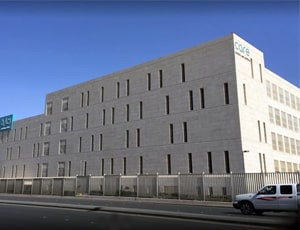Brachial plexus injury is a medical emergency caused due to an injury to the brachial plexus group of nerves that sends signals from your spine to your shoulder, arm, and hand. These nerves control and administer feelings in the muscles of the shoulder, elbow, wrist, hand, and arm. This damage is also known as brachial plexopathy. Brachial plexus injury appears when these nerves are compressed, stretched, or in the most serious case, ripped apart from the spinal cord. Some brachial plexus injuries known as stingers or burners are inconsequential and will completely recover in a few weeks. However, other brachial plexus injuries are severe enough and may cause some permanent impairment in the arm. In severe conditions, it can paralyze your arm, with a failure of function and sensation.
Brachial plexus injury results when the brachial nerves are damaged by excessive stretching, pressure, or cutting. Stretching can occur when your shoulder is forced down while your neck stretches up and away from the injured shoulder such as during a motorcycle or a car accident. In case of a serious injury, the brachial nerve may rip off the spinal cord in the neck. This type of brachial plexus injury is classified as a traumatic brachial plexus injury. It may occur because of different reasons, including:
Brachial plexopathy may also result from exposure to radiation at the time of stereotactic radiosurgery or specific procedures such as stereotactic breast biopsy.
Symptoms of the brachial plexus injury depend on the seriousness of the injury. A minor injury can often occur during any contact sport and minor trauma when the brachial plexus nerves get stretched or compressed. Minor brachial plexus injury symptoms include the following:
More serious brachial plexus injury symptoms result when nerves are torn or ruptured. Such injuries may produce the following symptoms:
In case of childbirth brachial plexus injury, symptoms can be seen right after the birth of the child. These may include:
Comprehensive understanding of the specific nature of injury in each patient is a must for proper management of brachial plexus injury. Multiple modalities are utilized for exact diagnosis of brachial plexus injury, including:
No brachial plexus injury treatment is required in case of minor injury as the condition improves by itself. However, severe and complex cases may require immediate treatment. The choice of treatment depends on the severity of the condition and the type of injury. Common brachial plexus injury treatment includes physical therapy and exercise, medication and in some cases, surgery.
In case of children, many infants recover within 6 months, but in case of poor recovery, further surgery may be needed to compensate for the nerve deficits.
The treatment approach selected by the surgeon depends on the extent of the damage to the brachial plexus nerves of the patient. The surgeon will select the best approach after thorough examination and diagnostic tests.
Some common types of surgical brachial plexus injury treatment include the following:
It is very hard to assess an exact recovery time after brachial plexus injury treatment due to the broad spectrum. How likely a spontaneous recovery depends on the type and severity of the injury.
In the case of surgery, nerve tissue grows very slowly, about an inch a month, so it can take a few years to assess the success of brachial plexus injury surgery. However, during the recovery period, patients are encouraged to keep their joints flexible by following an exercise schedule. The success rate of surgery is quite good but recovery time and success rate must be assessed on an individual basis.

Cape Town, South Africa
In 2014, the long-awaited union of Life Claremont and Life Kingsbury Hospital took place, putting th...more
![]() Airport Transfer
Airport Transfer
![]() Choice of Meals
Choice of Meals
![]() Interpreter
Interpreter
![]() SIM
SIM

Riyadh, Saudi Arabia
History Riyadh care hospital is a highly specialized hospital with world-class infrastructure. The ...more
![]() Airport Transfer
Airport Transfer
![]() Choice of Meals
Choice of Meals
![]() Interpreter
Interpreter
![]() SIM
SIM

Lustmuhle, Switzerland
History Dr. Walter Winkelmann, a well-known naturopath founded Paracelsus clinic approximately 62 y...more
![]() Airport Transfer
Airport Transfer
![]() Choice of Meals
Choice of Meals
![]() Interpreter
Interpreter
![]() SIM
SIM
Q: Can physical therapy and exercise alone help treat brachial plexus injury?
A: In case of infants, gentle motion exercises performed by parents under the guidance of the physiotherapist is necessary. In case of adult brachial plexus injury, a physiotherapist may help rehabilitate cases with mild injury.
Your physiotherapist may recommend you some exercises to keep your joints and muscles working, prevent stiff joints and maintain a range of motion. In more serious cases of brachial plexus injuries, a surgery is conducted to restore nerve function by nerve replacements, nerve repairs and remove tumors causing the injury.
Q: What is childbirth brachial plexus injury?
A: There is another type of brachial plexus injury classified as obstetric brachial plexus injury. Obstetric injury occurs from a mechanical injury involving shoulder dystocia, typically during difficulty in childbirth, such as prolonged labor.
If the shoulders of the infant get wedged within the birth canal, then the risk of brachial plexus injury during childbirth is high. Usually, only the upper nerves are injured. This condition is called Erb's palsy. Total brachial plexus birth injury occurs when both the upper and lower nerves are injured.
Q: How is pain controlled and managed?
A: Pain relief management is an important part of the treatment of brachial plexus injury. In case of severe brachial plexus injuries, you can feel a debilitating, severe crushing sensation or a constant burning. Therefore, in most of the cases, narcotic medications are used initially but may be replaced as your recovery progresses to optimize pain relief.